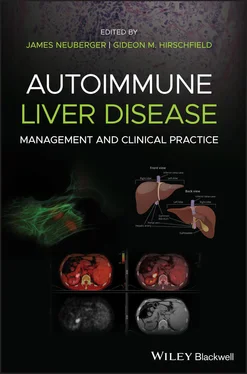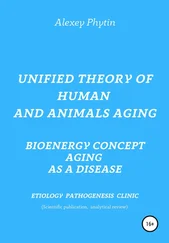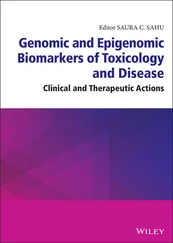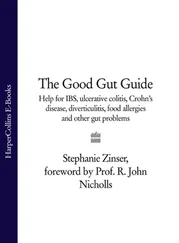Nuclear receptors, particularly the retinoid X receptor (RXR), have recently been involved in the immune response of BECs. This is a receptor superfamily that includes the glucocorticoid receptor, the retinoic acid receptor, the VDR, the liver X receptors, and the peroxisome proliferator‐activated receptors (PPARs). Nuclear receptors control several cell functions including cell proliferation and apoptosis, cell metabolism, cell–cell interaction, detoxification from BAs, and bile secretion.
In addition, continuous exposure to DAMPs and PAMPs could promote cellular senescence. Cell senescence is a mechanism of irreversible cell arrest in G1 stage induced by different stimuli. The main causes responsible for the onset of senescence are DNA damage (particularly but not exclusively) to the telomeres, the activation of mitogenic signals induced by oncogene activation, epigenetic modifications, and expression of tumor suppressor genes. All these signals lead to different physiologic responses generally leading to tumor suppression; however, in some cases it could promote cancer development or induce a fibrosing response and mediate age‐related degenerative diseases. Once senescent, cells not only cease proliferation but assume a senescence‐associated secretory phenotype (SASP) characterized by the secretion of a plethora of peptides with profibrogenic, proinflammatory, and tumorigenic properties. This indicates that senescence could not only act as a barrier to tumor growth, but also paracrinally stimulate the activation of aberrant reparative/regenerative responses. In chronic biliary diseases, cholangiocyte senescence is likely the result of ongoing inflammation, a sort of “exhaustion” of the activated cholangiocytes. This is particularly important in PSC, given the association with cholangiocarcinoma.
Biochemical Markers and Patterns of Hepatic Injury
Contrary to the kidney, no single test can be used to assess liver function. The liver biochemical tests, or liver function tests (LFTs), provide indirect evidence of hepatobiliary disease. LFTs that more accurately reflect liver synthesis include serum albumin, serum bilirubin, and prothrombin time, which is standardized to the international normalized ratio (INR). The enzymes aspartate aminotransferase (AST) and alanine aminotransferase (ALT) are markers of hepatocellular disease, whereas alkaline phosphatase (ALP) and gamma‐glutamyltranspeptidase (GGT) are markers of cholestasis. The clinical evaluation of patients with abnormal LFTs involves an accurate interpretation of the pattern of liver damage in the context of an accurately collected medical history and physical examination. The severity and pattern of LFT abnormality, assessed by serial measurements, can be distinctive or aspecific. Different patterns of damage can be observed: hepatocellular damage, with predominant elevations in AST and ALT; cholestatic damage, with predominant increases in ALP, GGT, and bilirubin; and infiltrative damage with ALP and GGT increased disproportionately to bilirubin. These patterns are valuable in directing specific serologic tests, imaging, and liver biopsy. However, they are not diagnostic for a specific cause, nor are they able to distinguish whether cholestasis is intrahepatic or extrahepatic.
Elevation of ALT and AST indicates hepatocellular necrosis. The interpretation of these increases should consider the rate of rise, the severity (peak level), the AST/ALT ratio, and coexisting abnormalities in other LFTs and other investigations. ALT and AST are enzymes that catalyze the transfer of amino groups from alanine or aspartic acid to ketoglutaric acid to form pyruvic acid and oxaloacetic acid, respectively, during gluconeogenesis. ALT is localized primarily in the liver and confined to the cytoplasm, while AST can be released by the liver, myocardium, skeletal muscle, kidney, pancreas, and blood cells, and can be found in the cytoplasm and mitochondria. During hepatocellular injury they are released into the bloodstream. However, their increase is not always pathologic: they can be raised by vigorous physical activity, and rarely an isolated AST can be the result of the binding of the enzyme with an immunoglobulin forming a macro‐enzyme (macro‐AST) complex. The diagnostic specificity of mild‐to‐moderate increases in aminotransferases is poor, with many differential diagnoses being possible, whereas the spectrum of liver conditions indicated by markedly elevated aminotransferase levels (>2000 IU/l) narrows to viral (mostly hepatitis A and hepatitis B virus), ischemic (shock liver), and drugs. Autoimmune hepatitis can sometimes have an acute outset with striking elevation of aminotransferases. Rarely, bile duct stones can manifest as marked rise in aminotransferase, although this is followed by a rapid fall within 48 hours.
The AST/ALT ratio can often provide a clue to the diagnosis. In the majority of cases of hepatitis, the AST/ALT ratio is less or equal to 1. The AST/ALT ratio is typically greater than 2 during alcoholic hepatitis. This occurs because damage is primarily mitochondrial (thus more AST is released systemically) and ALT synthesis is more sensitive than AST to pyridoxal 5‐phosphate deficiency, a common finding in alcoholics, leading to lower serum ALT levels. Supplementation with pyridoxine in patients with alcoholic hepatitis results in a rise in the level of ALT. An AST/ALT ratio greater than 1 in patients without a history of alcoholism is suggestive of advanced fibrosis or cirrhosis. An AST/ALT ratio greater than 4 is observed in patients with fulminant Wilson disease.
Cholestasis is an overarching term applied to conditions in which there is impairment of bile formation and/or bile flow. It occurs where there is a failure at any point along the biliary tree, between the basolateral (sinusoidal) membrane of the hepatocyte and the ampulla of Vater, as a result of congenital or acquired injuries, that leads to impaired secretion of bile such that biliary constituents spill into blood. It may result from (i) hepatocellular and/or cholangiocellular secretory defects or (ii) obstruction of bile ducts by bile duct lesions, stones or tumors, but may also be related to mixed mechanisms in conditions such as PBC or PSC.
ALP and GGT are markers of cholestasis. ALP is a ubiquitous membrane‐bound glycoprotein that catalyzes the hydrolysis of phosphate monoesters at basic pH values. Liver and bone are the major source of serum ALP. The liver isoenzyme is located on the canalicular side of the hepatocyte plasma membrane and the luminal surface of bile duct epithelium. Serum ALP elevation more than three times normal strongly suggests cholestasis if bone disease is absent and GGT is elevated. In patients with cholestasis, the ALP elevation is triggered by increased synthesis and release of the enzyme into serum rather than impaired biliary secretion. BAs build up in hepatocytes and solubilize the plasma membrane, thereby resulting in release of ALP. The half‐life of serum ALP is 5–7 days, and therefore serum ALP remains elevated for several days after resolution of the biliary obstruction. ALP is not used as a marker of cholestasis in adolescent and pregnant women since ALP in these conditions can be raised as a consequence of rapid bone growth and placental growth. Chronic renal failure can result in elevation of the intestinal ALP isoenzyme. In patients with raised ALP, hyperthyroidism should be ruled out. Rarely, ALP can be identified in patients with underlying malignancy not involving either liver or bones. This is the Regan isoenzyme, biochemically different from the liver isoenzyme, that has been described in lung cancer, Hodgkin disease, and renal cell carcinoma. Finally, ALP should be tested after fasting since its level can rise after a fatty meal.
Читать дальше












